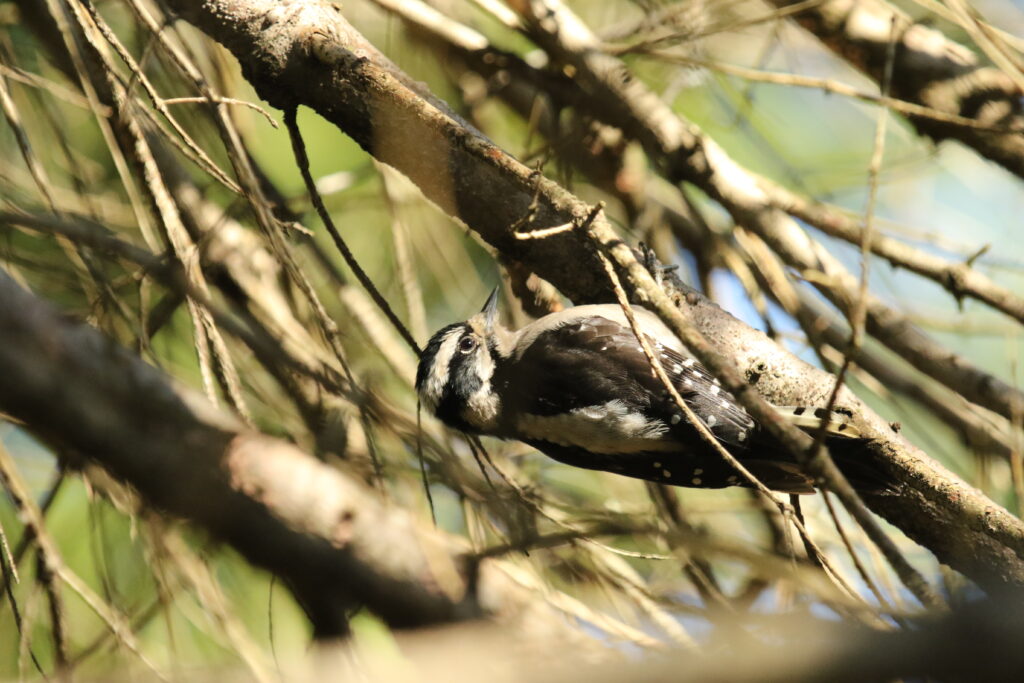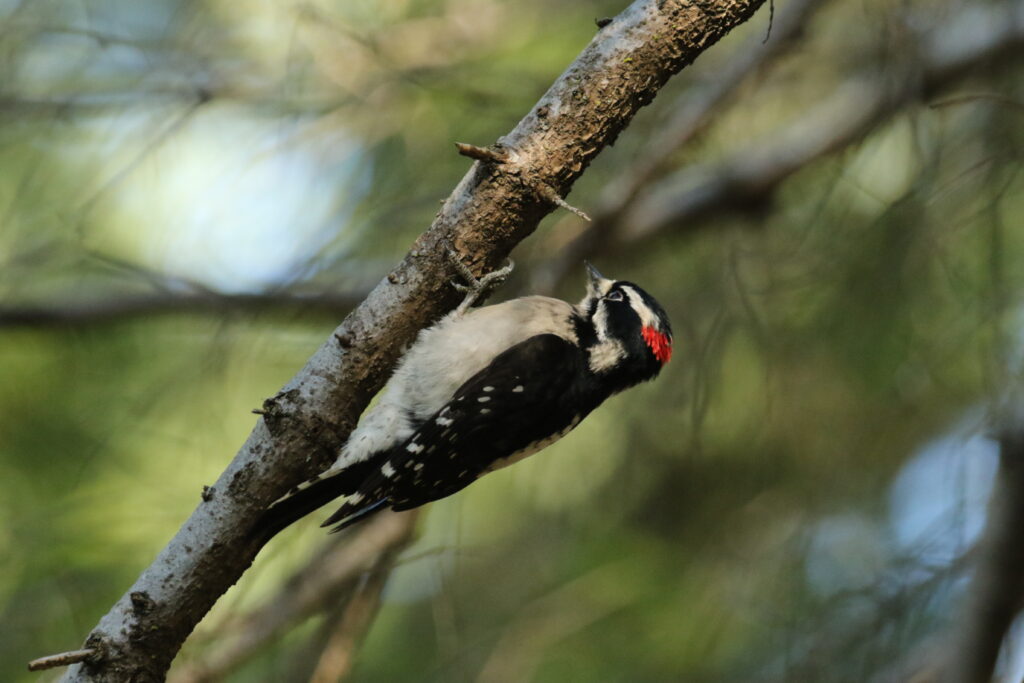Downy Woodpecker (Dryobates pubescens)

The Downy Woodpecker is the smallest North American woodpecker species. They have a classic woodpecker body plan, with a straight-backed posture as they lean on their tail feather for support. Downy woodpeckers have a disproportionately small beak for their body size, compared to other woodpecker species. Downy woodpeckers have a speckled or checkered black and white colouration, a boldly striped head, and males have a bright red patch on the back of their head.

Downy woodpeckers look very similar to the hairy woodpecker. An easy distinguishing feature between these two is their size. Hairy woodpeckers are larger in body size and have a longer beak in relation to their head size. Interestingly enough, despite how similar the plumage is between the hairy and downy woodpecker, they are actually not closely related, and their similarities are likely a result of convergent evolution.

Downy woodpeckers are an active woodpecker, moving quickly over tree trunks, branches and other vegetation in search of food. They eat mostly insects and some plant material. Downy woodpeckers are found in open woodlands, especially in deciduous and riparian areas, including parks and suburban areas. They breed throughout BC, more frequently in the southern parts of the province. Downy woodpeckers nest in cavities that they excavate in dead deciduous trees. This is a great example of the importance of dead trees in an ecosystem, and why they should not be cut down.
For more information, visit the BC Breeding Bird Atlas and All About Birds by the Cornell Lab.


